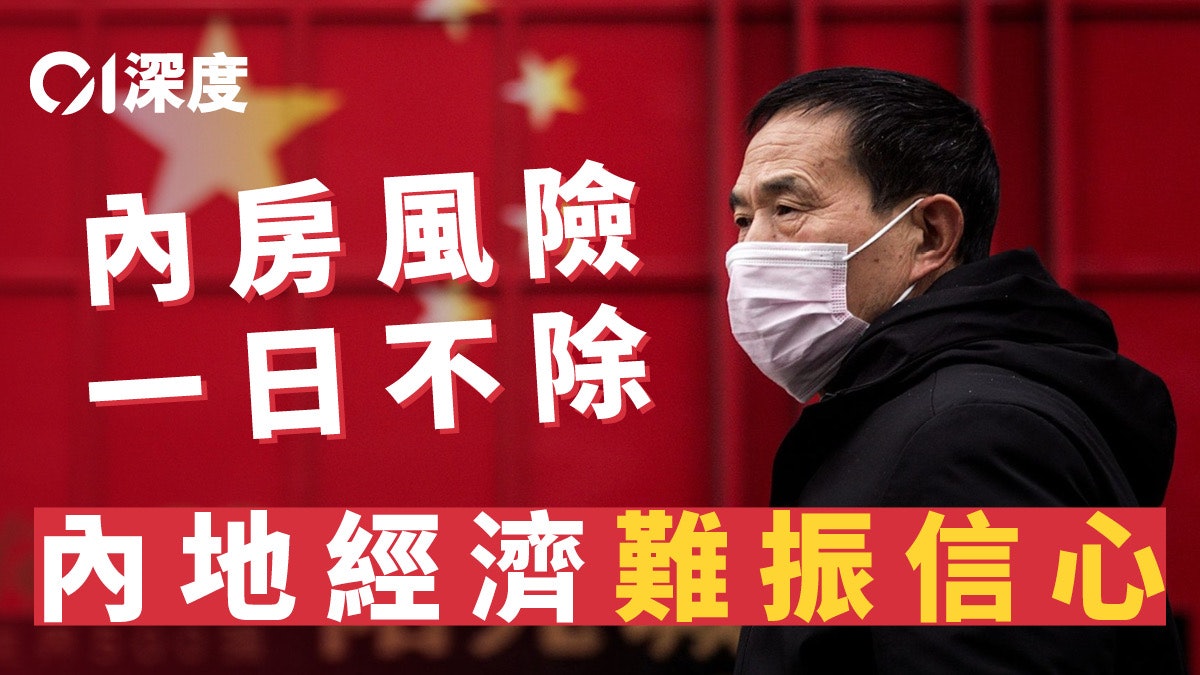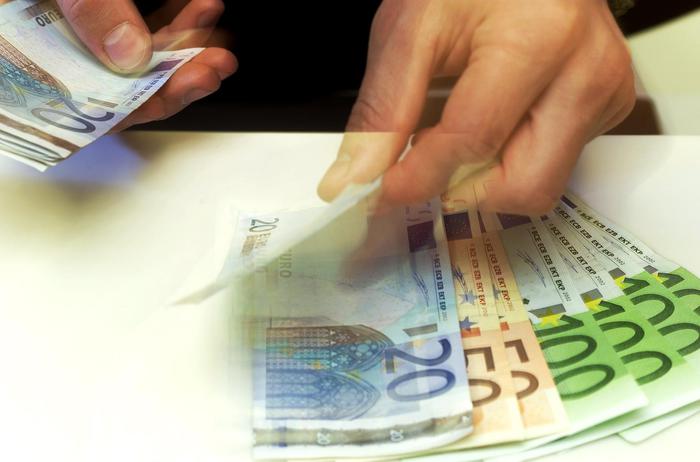Last Friday (July 15), the National Bureau of Statistics released economic data for the first half of 2022. In the second quarter, the mainland’s gross domestic product (GDP) was 29 trillion yuan (RMB, the same below), with a growth rate of 0.4% over the same period. In the first half of the year, the total GDP was 56 trillion yuan, with a year-on-year growth rate of 2.5%.
Compared with the growth rate of 4.8% in the first quarter, the data in the second quarter can be described as a "cliff-like decline", casting a shadow over China's economic growth target of 5.5% this year.
However, as the world's second largest economy, the resilience of China's economy should not be ignored. The leap from 2.5% to 5.5% is still possible, and the key lies in how to resolve the internal housing crisis.
Affected by the epidemic, the mainland's GDP growth rate was only 0.4% in the second quarter and 2.5% in the first half of the year.
(file picture)
Challenge: Demand contraction due to expected risks
The biggest reason for the rapid braking of GDP growth is of course the large-scale outbreak of epidemics in Shanghai, Beijing and other places from March to April this year, as well as the consecutive months of economic shutdown caused by epidemic prevention and control.
The day after the data was released, the 2022 mid-term macro summit, hosted by the China Wealth Management 50 Forum (CWM50), with the theme of "Stable Growth and Realization Path", was held in Beijing. Former senior government officials, national think tank scholars, and chief economists gathered In this session, we will share our research and judgment on China's economic performance in the second half of the year.
Sun Xuegong, director of the decision-making consulting department of the China Academy of Macroeconomics under the National Development and Reform Commission, calculated in a speech at the forum that, assuming there is no epidemic in the second quarter, economic growth is still calculated at around 5%, and inflation remains unchanged, the GDP in the second quarter will be higher than it is now 1.3 trillion yuan more.
He described the "1.3 trillion yuan" as "the price and bills borne by the epidemic."
Sun Xuegong pointed out that the low GDP growth rate in the second quarter had an impact of about 1.1 percentage points on the annual GDP growth rate, that is, under this year's 5.5% growth rate target, even if the other quarters remained normal, the epidemic in the second quarter would also be affected. As a result, the growth rate has dropped to 4.4%. "The impact is very large, and it is a trillion-scale impact."
Sun Xuegong, director of the decision-making consulting department of the China Academy of Macroeconomics, pointed out that the cost of the epidemic in the second quarter was 1.3 trillion yuan.
(File photo: China Wealth Management 50 Forum)
Under the economic winter, unemployment is high and consumption is weak.
The "Wall Street Journal" reported in early July that Tencent and ByteDance, two leading Chinese technology companies, are laying off employees, or even affecting their core businesses.
Among them, ByteDance’s education business had more than 20,000 employees at its peak. After the new “double reduction” regulations in July last year, it was reduced to less than 6,000 people. This year, it will reduce about 3,000 people.
According to Wang Pingping, director of the Department of Population and Employment Statistics of the National Bureau of Statistics, the average urban unemployment rate in the first half of the year was 5.7 percent, 0.5 percentage points higher than the same period last year. The average unemployment rate in 31 large cities was 6.5 percent.
In addition, the unemployment rate of youth aged 16-24 continued to rise, reaching 19.3% in June.
"The domestic economy still faces the triple pressure of demand contraction, supply shock, and weakening expectations. The demand for labor from enterprises is weak, the overall employment pressure is still relatively large, and the unemployment rate is still higher than the same period last year."
Sun Xuegong pointed out that consumer confidence is generally low, and even if they have the ability to pay, they are "unwilling to spend money." For example, in the first half of the year, per capita disposable income actually increased by 3%, but the retail sales of social goods was -0.7%. "There is a gap between income and expenditure. a big gap."
The rapid decline in manpower demand and consumer demand is the contraction behavior of market players in response to "public risks".
The market's concerns about public risks come from the intensifying housing crisis and the lack of expected risk management.
Liu Shangxi, president of the Chinese Academy of Fiscal Sciences, reminded China's economy in April that it needs to guard against public risks.
(File photo: China Wealth Management 50 Forum)
Regarding the impact of expected risks on demand, Liu Shangxi, president of the Chinese Academy of Fiscal Sciences, gave a keynote speech at the China Economic 50 Forum in April this year, "Viewing my country's Current Economic Situation from the Perspective of "Risk-Cost". "The analytical framework is a new way of dismantling China's current economic situation.
Liu Shangxi pointed out that risk is a kind of cost in the "future tense", "the current risk cost is getting bigger and bigger, especially under the conditions of high uncertainty, the influence on the behavior of enterprises is getting bigger and bigger, and the influence on the macro economy is also bigger and bigger. Increasingly, when the level of public risk rises, the cost of risk generally rises and the economy contracts.”
Liu Shangxi explained that the government has reduced the burden on enterprises for many years, but enterprises still feel that the cost pressure is increasing, because the risk hedges the effect of the cost reduction policy.
He also pointed out that even though different companies and industries have different degrees of risk exposure, the probability is the same, that is, public risks are no different for micro-subjects - not only affecting companies, but also residents, and even the entire society.
Talking about the source of public risks, Liu Shangxi pointed to two: one is the externalization of individual risks of enterprises, such as the debt crisis of Evergrande Group, a leading real estate company in China; the other is the incompatibility between governance transformation and development transformation, that is, the government Governance reforms lag behind economic development, so policies lack expectations and fail to manage public risks well.
The "disruption of unfinished properties" has a wide range of implications.
(Phoenix Network)
Breaking the game: Confidence can only be built by managing risks in the real estate industry
"From the perspective of the short-term and long-term relationship, the various short-term problems currently facing are derived from long-term problems. From the perspective of the relationship between risks and problems, the various risks and challenges we are currently facing are caused by accumulated problems. "Liu Shangxi said at the China Wealth Management 50 Forum, "So, from this point of view, if we want to grow steadily, we should start from the long-term to solve short-term problems, and we should start from solving the accumulated problems to prevent and resolve them. risk."
In this summit, the consensus of various economists and politicians on boosting the economy in the second half of the year all pointed to one point: to achieve the "5.5%" target, we must focus on the real estate industry and resolve the industry's national policy of "housing, not speculating" and Risks that may arise under market corrections.
For example, Liu Yuanchun, president of Shanghai University of Finance and Economics, pointed out that the "mutation" of the real estate market reflects the government's lack of preparation for the risk exposure path in the process of debt consolidation and business divestiture of leading real estate companies.
Liu Yuanchun suggested that the market adjustment should not be too fast, but the government's affordable housing can be moderately accelerated, "so as to avoid conflicts between stabilizing growth and controlling risks."
Liu Shangxi also said that uncertain events such as the new crown virus epidemic and real estate turmoil will hit the already fragile market confidence, especially the chain reaction of "high attention" to real estate risks.
He mentioned the recent "disruption of unfinished properties" that has attracted much attention: "The people have paid the money, but the house has not been received for many years. This is a people's livelihood issue. However, if the supply interruption spreads further, it will not only affect developers, but will If it affects home buyers, developers, banks, and enterprises in related industries, it will form a risk cycle, which is likely to cause the spread and superposition of risks.”
Liu Shangxi emphasized that the real estate market still has potential, but it is necessary to adhere to the basic policy of "housing, not speculating," and to ensure basic housing needs. "It is necessary to adjust and change the development model of real estate to avoid the derivation of bubbles."
Evergrande Group's debt crisis casts a shadow over China's economic recovery in the second half of the year.
(Source: Reuters)
"Our current downward pressure on the economy is actually manifested in the recession of the balance sheet. Therefore, I think it is very important to realize the 'stability' of the economy and the 'stability' of employment from the interconnectedness of the balance sheet." Liu Shangxi For example, state-owned enterprises, private enterprises, and ordinary households are all subject to higher and higher "asset-liability ratios" and are unwilling to expand and expand consumption. They can borrow equity and property rights markets to "turn money into long-term capital."
Huang Yiping, deputy dean of the National Development Institute of Peking University, added that in addition to the risk of balance sheet recession, we should also pay attention to the risk of cash flow rupture, "If cash flow is suddenly squeezed, the risk at the micro level may be magnified. This is something we need to pay close attention to.”
Chen Daofu, deputy director of finance at the Development Research Center of the State Council, suggested that in dealing with risk events, it is necessary to introduce some investment bank thinking and break through the existing framework.
He suggested setting up a risk disposal mechanism. "What kind of risk disposal mechanism will determine how risks and events will evolve in the end. Therefore, choosing a reasonable risk disposal mechanism will help maintain the stability of China's entire system."
Yao Yang, dean of the National School of Development of Peking University, suggested adjusting the "three red lines" policy.
(File photo / Hexun.com)
The inner room is trapped, and various experts have recently offered advice.
Yao Yang, Dean of the National School of Development of Peking University, recently (July 12) suggested adjusting the "Three Red Lines" policy at the 159th seminar.
The policy refers to the three criteria for the People's Bank of China and the Ministry of Housing and Urban-Rural Development to restrict financing for real estate developers from 2021: (1) the asset-liability ratio after excluding advance receipts shall not exceed 70%; (2) the net debt ratio shall not exceed 100%; (3) The cash short-term debt ratio is not less than 1.
According to the contact situation of the "three red lines", real estate enterprises are divided into four grades of "red, orange, yellow and green", and real estate enterprises in different grades implement different borrowing standards.
Yao Yang pointed out that the "three red lines" need to be carefully considered and polished, for example, "the first red line - the asset-liability ratio after excluding advance receipts does not exceed 70%, it can be said that (the enterprise's asset-liability ratio exceeds 70%) is wrong, but it should be given There is room for companies to adjust, and the third red line is even more incredible. The cash-to-short-term debt ratio is not less than 1. If you have cash in hand, will you still borrow money?”
Xu Gao, chief economist of Bank of China Securities, pointed out in an interview with internal media a few days ago that in addition to adjusting the "three red lines" policy, a "healthy development and stability fund for the real estate industry" should be established to get rid of the dilemma of the day.
He suggested that the size of the fund could reach 1 trillion yuan, and the government should first contribute 100 billion yuan, and then raise 900 billion yuan from financial institutions, so as to invest in private housing companies and become minority shareholders, thereby stabilizing market confidence; when the industry returns to normal conditions , the relevant funds can exit with profit in time, and do not pursue long-term holdings.
"If government credit can come in, industry expectations will change," he believes.









